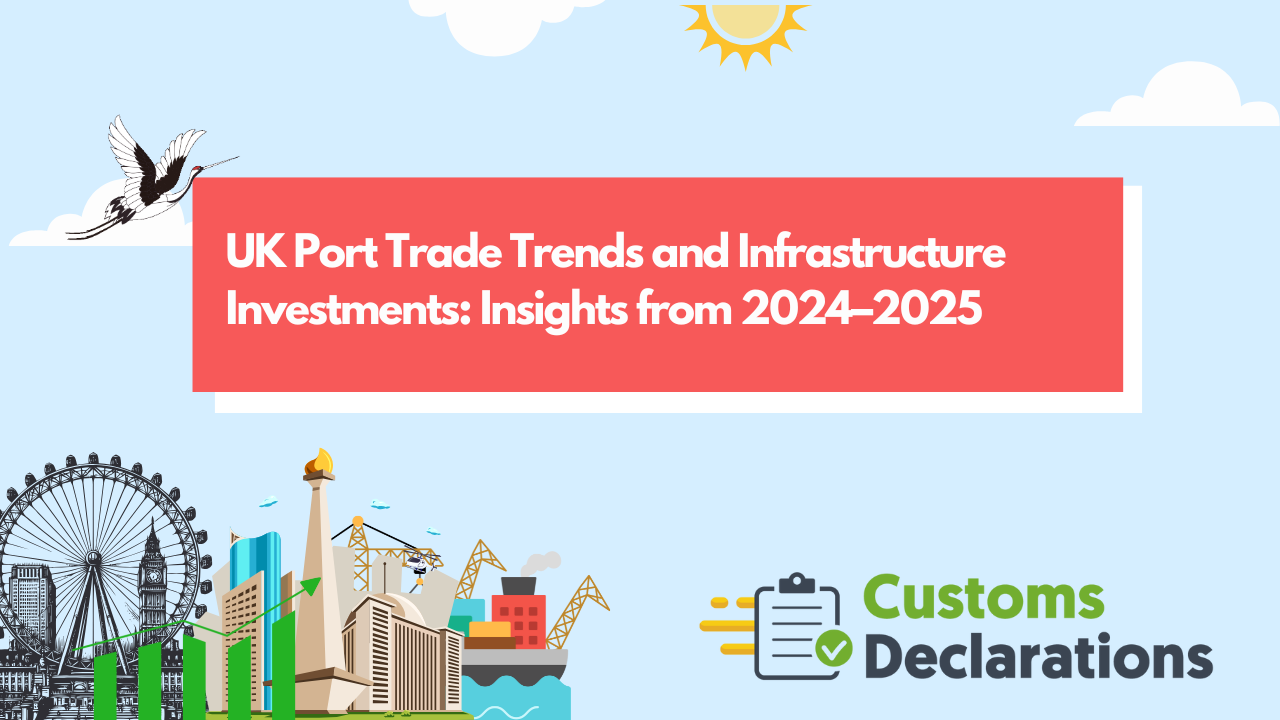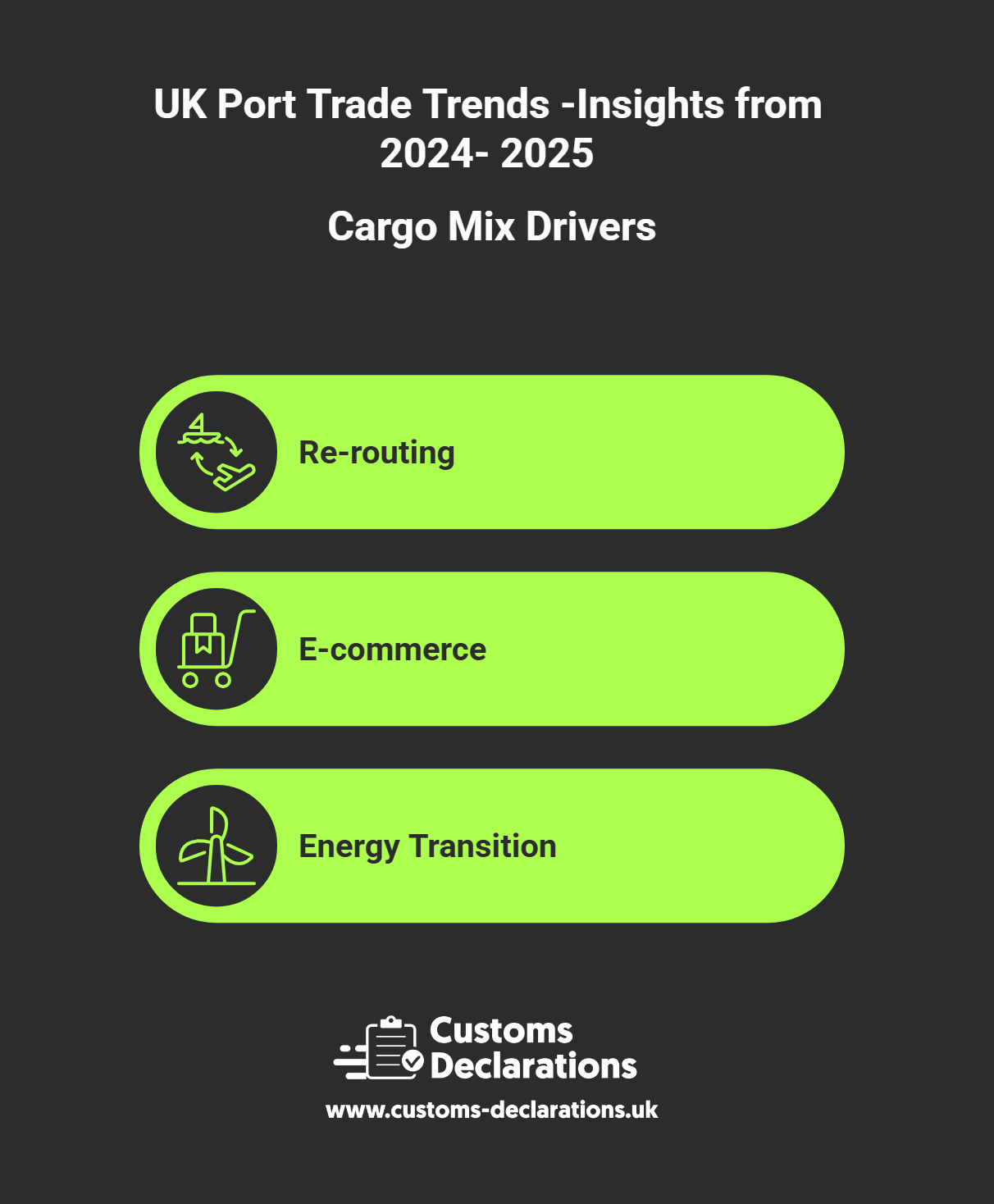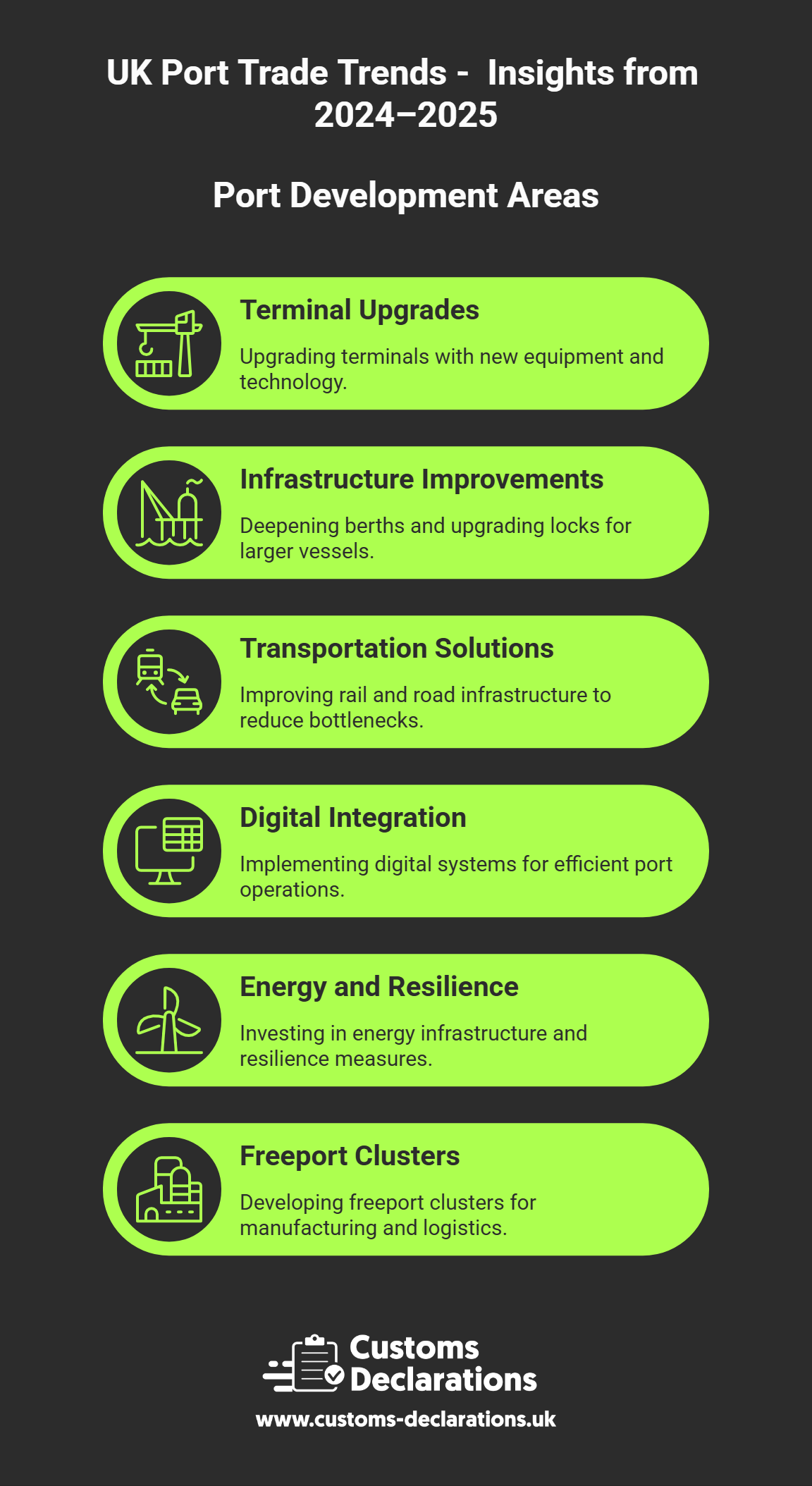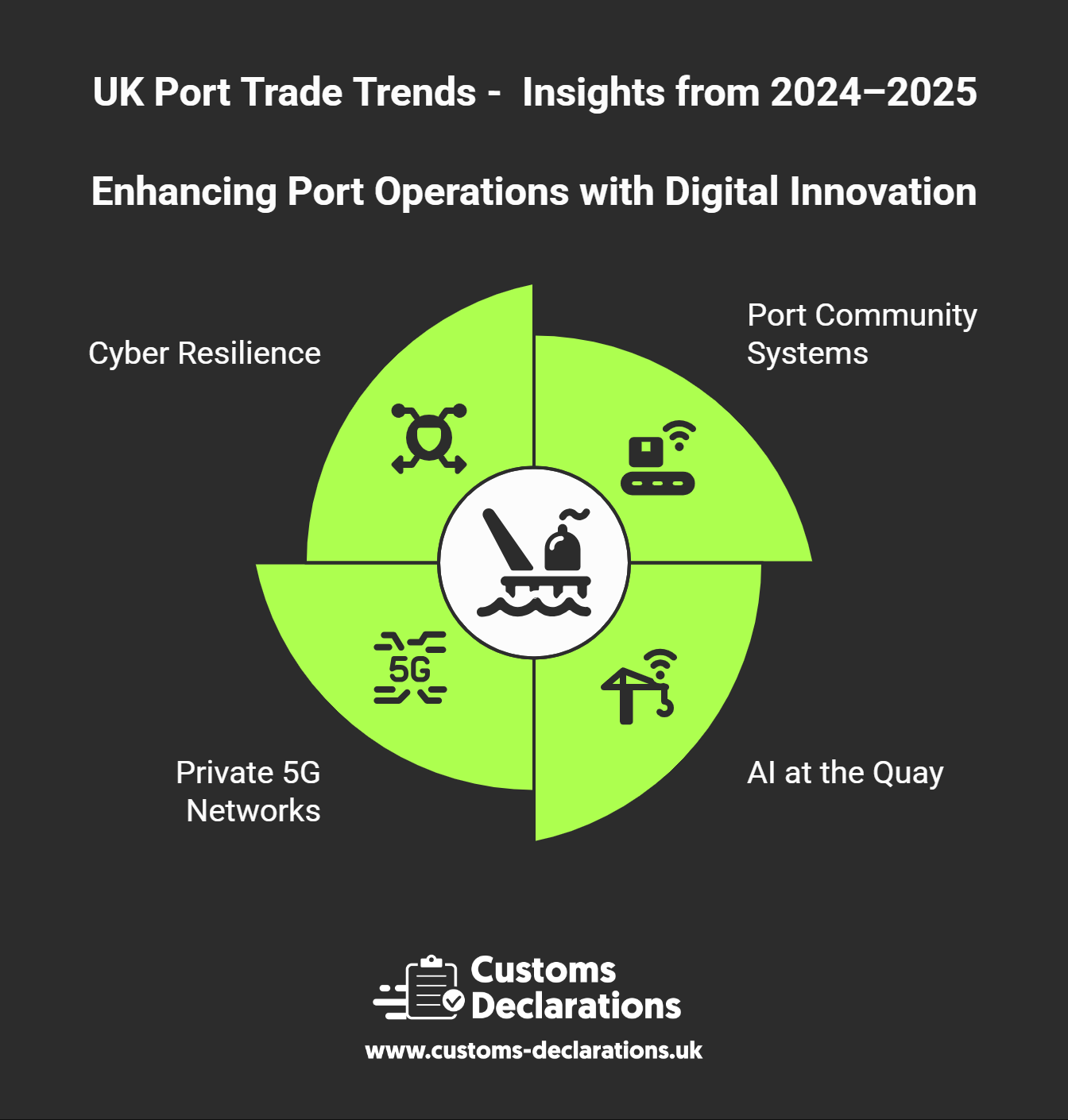Introduction: A Sector That Is Changing Its Cargo Mix—And Its Mission
Across 2024 and into 2025, the UK’s ports did not stand still. While headline tonnage slipped marginally, the composition of what moved—and the capabilities built to handle it—shifted in important ways. Containerised flows set new records; roll-on/roll-off (Ro-Ro) corridors adjusted to post-Brexit realities and strengthened; and energy-related bulks eased as the power sector decarbonised. Behind the quay walls, operators poured capital into deeper berths, faster cranes, rail links, digital scheduling, and low-carbon infrastructure that will define competitiveness for the next decade.
This guide distils what has actually changed in UK port trade during 2024–2025, why it changed, and where investment is flowing. It also answers the questions importers, exporters, freight forwarders and shippers are asking—especially around customs processes that can make or break schedule reliability.




